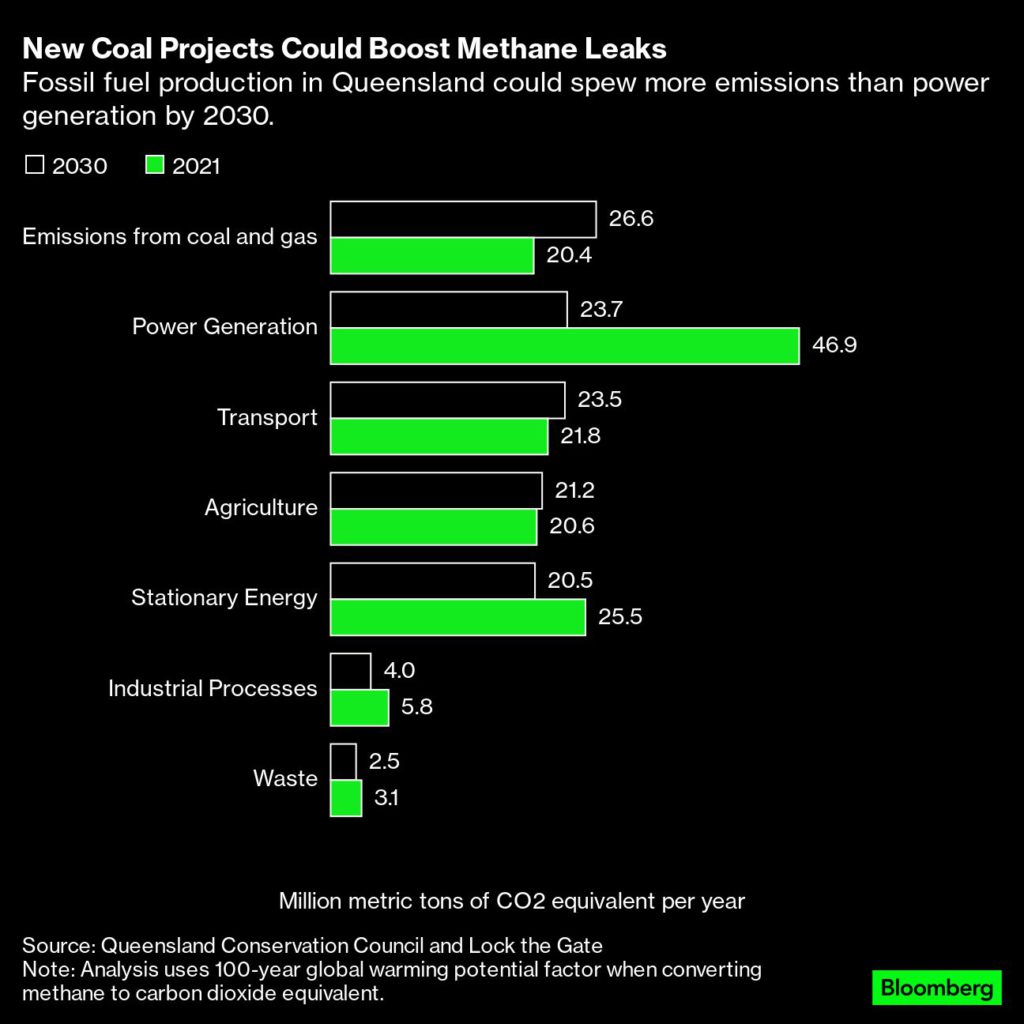Bloomberg News | September 6, 2023 |

Most of Australia’s coal mines are in the Hunter Valley (pictured), Bowen Basin and Surat Basin regions. (Image: Max Phillips (Jeremy Buckingham MLC) | Flickr.)
Methane leaking from coal and natural gas production could become the biggest source of emissions in the Australian state of Queensland by the end of this decade if 18 new mine and expansion projects proceed, according to a report from two climate groups.

Emissions from Queensland coal and gas production could reach 26.6 million metric tons of carbon dioxide equivalent a year by 2030, exceeding emissions from other sectors including the state’s power generation, the analysis from Lock the Gate and Queensland Conservation Council showed. Both groups oppose the development of new coal projects.
The analysis highlights how even as emissions from other sources like power generation are expected to drop significantly as adoption of renewables grows, new fossil fuel production continues to pose a massive climate threat. Australia is a signatory to the Global Methane Pledge, a 150-nation effort that aims to slash global emissions of the gas 30% by the end of this decade from 2020 levels.
Queensland is committed to reducing greenhouse gas emissions, including methane, 30% below 2005 levels by the end of this decade, the state’s environmental department said in a statement. The state also aims to develop decarbonization plans for industry and is collaborating with the national government and universities to investigate remote sensing opportunities to detect methane leaks.

Methane is the primary component of natural gas but it’s also emitted from underground and surface mines when sedimentary rocks are crushed or coal seams are exposed. The invisible greenhouse gas has a devastating short term impact on the climate because it has more than 80 times the warming power of carbon dioxide during its first 20 years in the atmosphere.
Halting releases of the gas could do more to ease temperatures in the short term than almost any other single measure because the gas loses its potency within decades. Although agriculture is the biggest source of methane generated from human activity followed by fossil fuels and waste, limiting emissions from coal, oil and gas supply chains is seen as some of the lowest hanging fruit in the fight against climate change.
(By Aaron Clark)
No comments:
Post a Comment